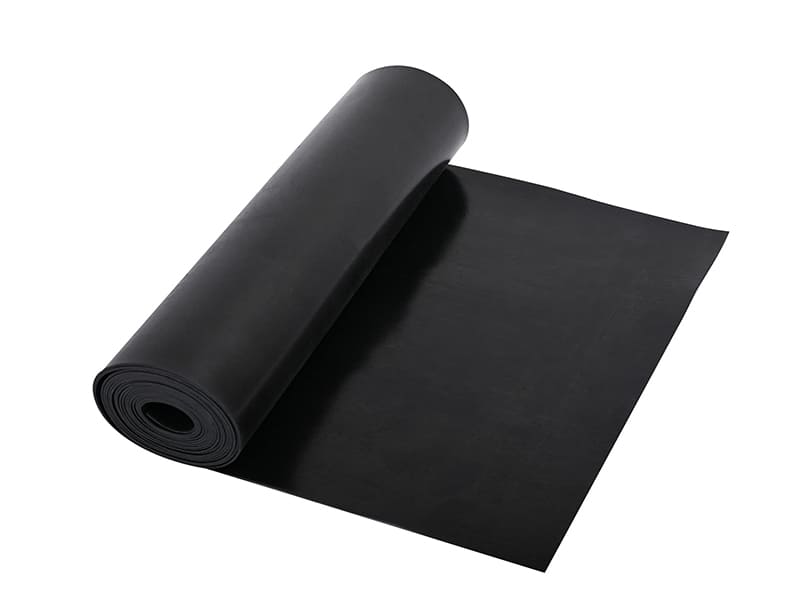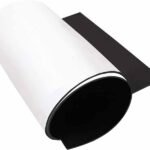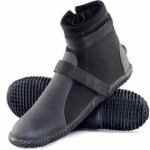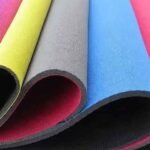Neoprene is a material that has become synonymous with versatility and durability. From wetsuits to koozies, it’s widely used across industries for its unique properties. But have you ever wondered what it’s made of and why it’s so popular?
Neoprene is made from a synthetic rubber called polychloroprene, which is created through the polymerization of chloroprene. Its chemical structure gives it flexibility, water resistance, and durability, making it ideal for a variety of applications.
Let’s explore the composition, characteristics, and manufacturing process of neoprene, along with insights into why it’s a preferred material for so many products.
What Are the Ingredients in Neoprene?
To understand neoprene’s composition, it’s important to look at its key ingredients and how they contribute to its properties.
Neoprene is primarily made of chloroprene, a monomer derived from crude oil or limestone. It is polymerized to create polychloroprene, a synthetic rubber. Additional compounds such as accelerants, fillers, and stabilizers are added to enhance its durability and elasticity.
Composition of Neoprene
| Ingredient | Purpose |
|---|---|
| Chloroprene | Base material for creating polychloroprene |
| Fillers (e.g., carbon black) | Enhances strength and durability |
| Stabilizers | Improves resistance to heat and aging |
| Accelerants | Speeds up the polymerization process |
For example, fillers like carbon black not only increase neoprene’s durability but also improve its ability to resist wear and tear.
Is Neoprene Rubber or Plastic?
Neoprene often sparks debate over whether it’s classified as rubber or plastic. Let’s break it down.
Neoprene is a synthetic rubber, not plastic. Its chemical structure is based on polychloroprene, which gives it elasticity and flexibility similar to natural rubber. However, it differs from natural rubber in its resistance to oils, chemicals, and weathering.
Comparing Neoprene, Rubber, and Plastic
| Material | Characteristics | Examples of Use |
|---|---|---|
| Neoprene | Elastic, durable, resistant to chemicals | Wetsuits, gloves, koozies |
| Natural Rubber | Highly elastic, less resistant to oils | Tires, gaskets, balloons |
| Plastic | Rigid or flexible, less elastic | Bottles, containers, packaging |
For instance, while neoprene shares some properties with plastic, its primary application aligns with rubber-like materials due to its stretchability and resilience.
What Type of Fabric Is Neoprene?
Neoprene is often referred to as a fabric because of its widespread use in apparel and accessories. But what exactly makes it fabric-like?
Neoprene is a foam-based synthetic rubber that is laminated with fabric on one or both sides. The fabric, often made of nylon or polyester, enhances its flexibility, strength, and comfort, making it suitable for clothing and accessories.
Structure of Neoprene Fabric
| Layer | Function |
|---|---|
| Neoprene Core | Provides insulation, elasticity, and water resistance |
| Outer Fabric Layer | Adds durability and aesthetic appeal |
| Inner Fabric Layer | Enhances comfort and moisture management |
For example, in wetsuits, the fabric layers make the neoprene easier to wear and improve its thermal insulation by reducing water flow inside the suit.
How Is Neoprene Manufactured?
The process of creating neoprene involves both chemical and mechanical steps to ensure its high performance and versatility.
Neoprene is manufactured by polymerizing chloroprene into polychloroprene through a process called emulsion polymerization. This synthetic rubber is then processed into sheets or molded into various shapes depending on its intended use.
Steps in Neoprene Manufacturing
-
Chloroprene Synthesis
- Derived from acetylene and hydrochloric acid or from limestone (calcium carbonate).
- Chloroprene is the base monomer for polychloroprene.
-
Polymerization
- Chloroprene undergoes emulsion polymerization in the presence of accelerants.
- The result is polychloroprene, which forms the core material.
-
Foaming
- Air or gas is introduced to create the neoprene foam.
- This process gives neoprene its lightweight and insulating properties.
-
Lamination
- Fabric layers (e.g., nylon, polyester) are bonded to the neoprene foam for added strength and flexibility.
-
Cutting and Shaping
- The neoprene is cut into sheets or molded into the desired product shapes, such as wetsuits or koozies.
Advantages of Limestone-Based Neoprene
Many manufacturers now use limestone-based neoprene, which has improved environmental and performance benefits:
| Feature | Benefit |
|---|---|
| Reduced Petroleum Use | More sustainable manufacturing |
| Closed-Cell Structure | Better insulation and durability |
| Higher Density | Increased tear resistance |
This method produces a higher-quality neoprene that is favored by industries requiring long-lasting and eco-conscious materials.
Conclusion
Neoprene is a remarkable material with a rich composition and a manufacturing process that sets it apart. Its versatility, durability, and performance make it a preferred choice for products across industries. Understanding what neoprene is made out of helps brands and manufacturers appreciate its potential for customization and innovation.
At Szoneier, we take pride in our expertise in neoprene product manufacturing. With years of experience, state-of-the-art equipment, and a commitment to quality, we provide customized neoprene solutions that meet the needs of brands, wholesalers, and retailers worldwide.
Contact us today at info@neoprene-bag.com or visit www.neoprene-bag.com to learn how we can help you bring your ideas to life.











